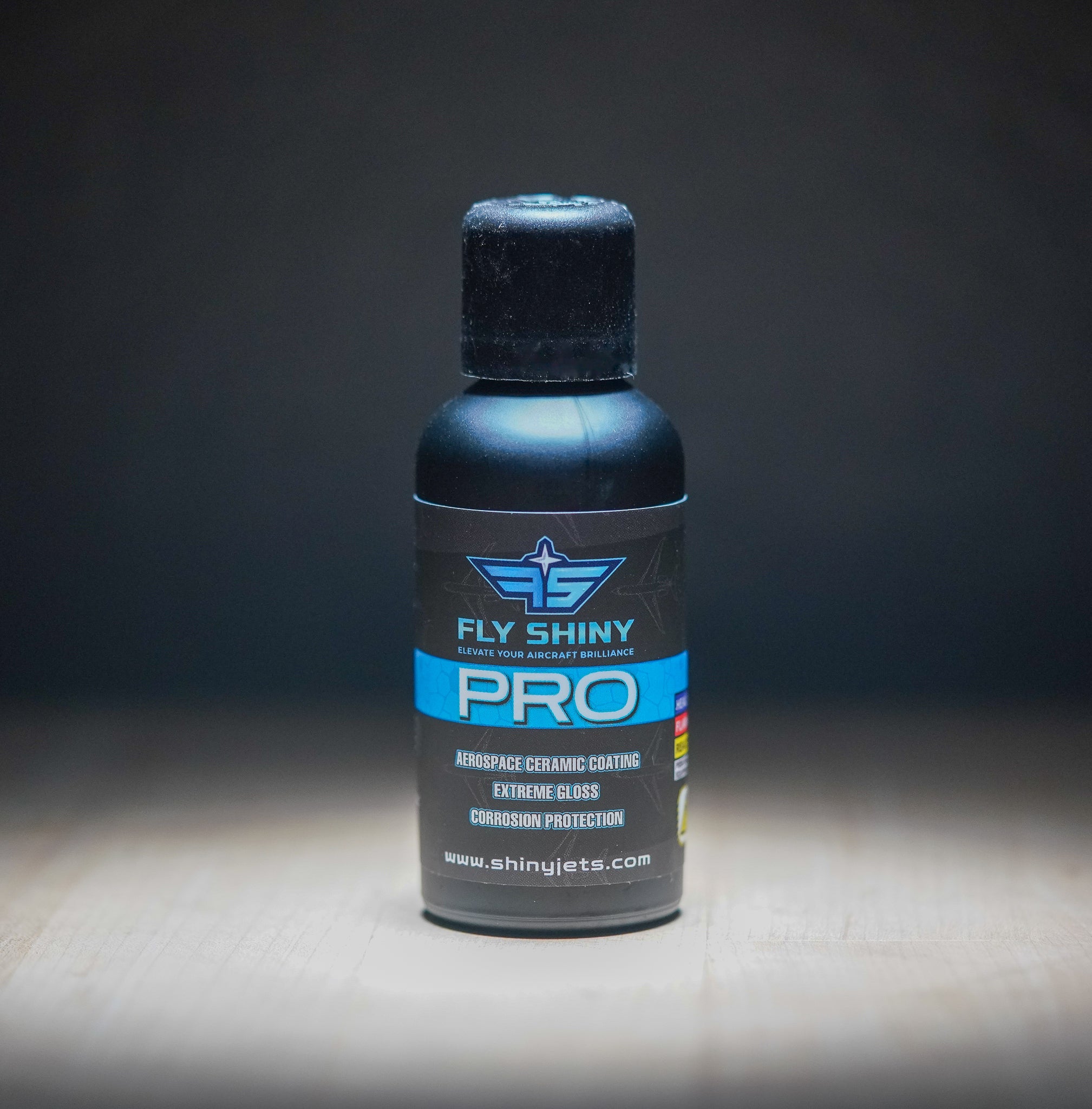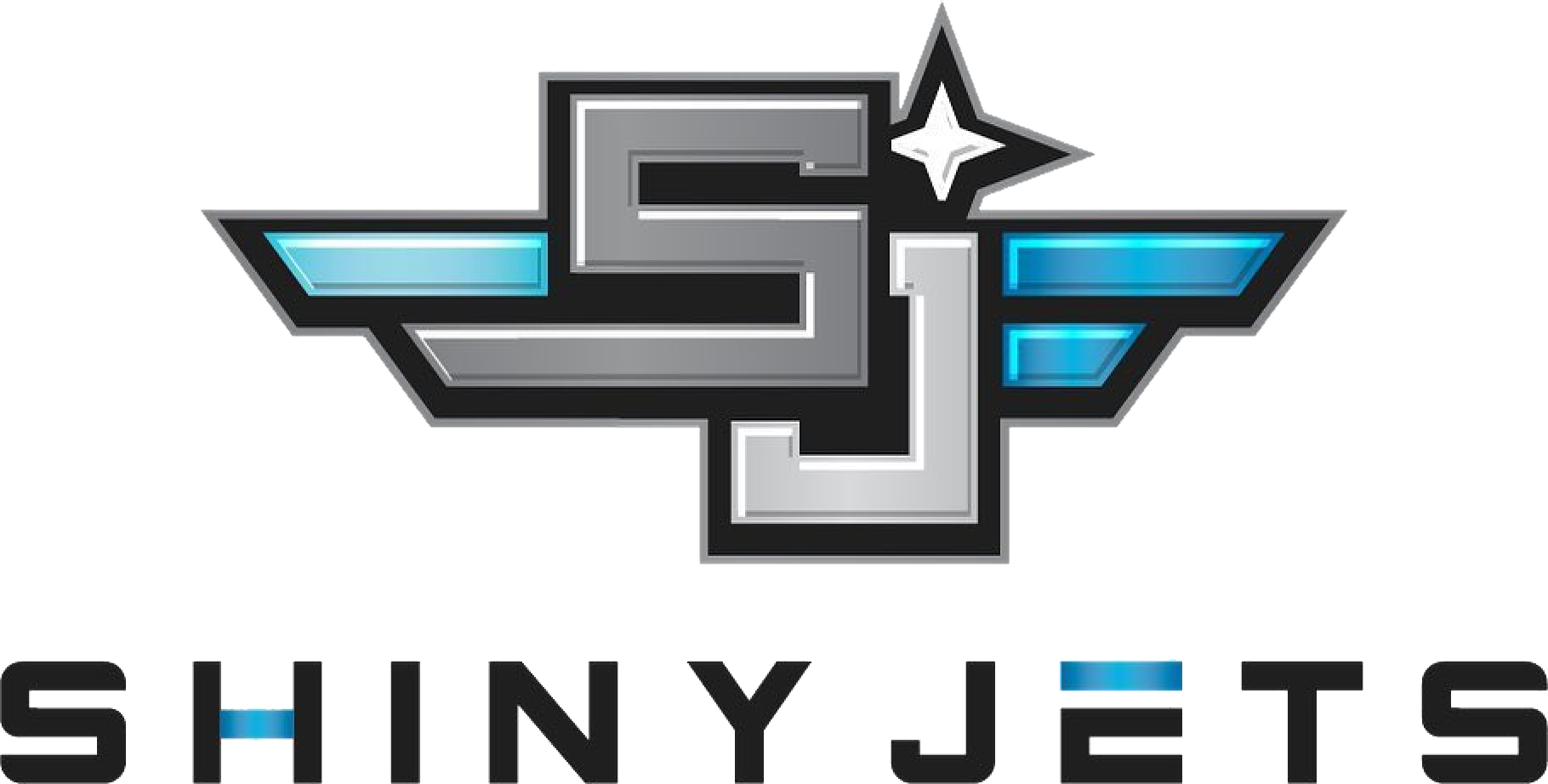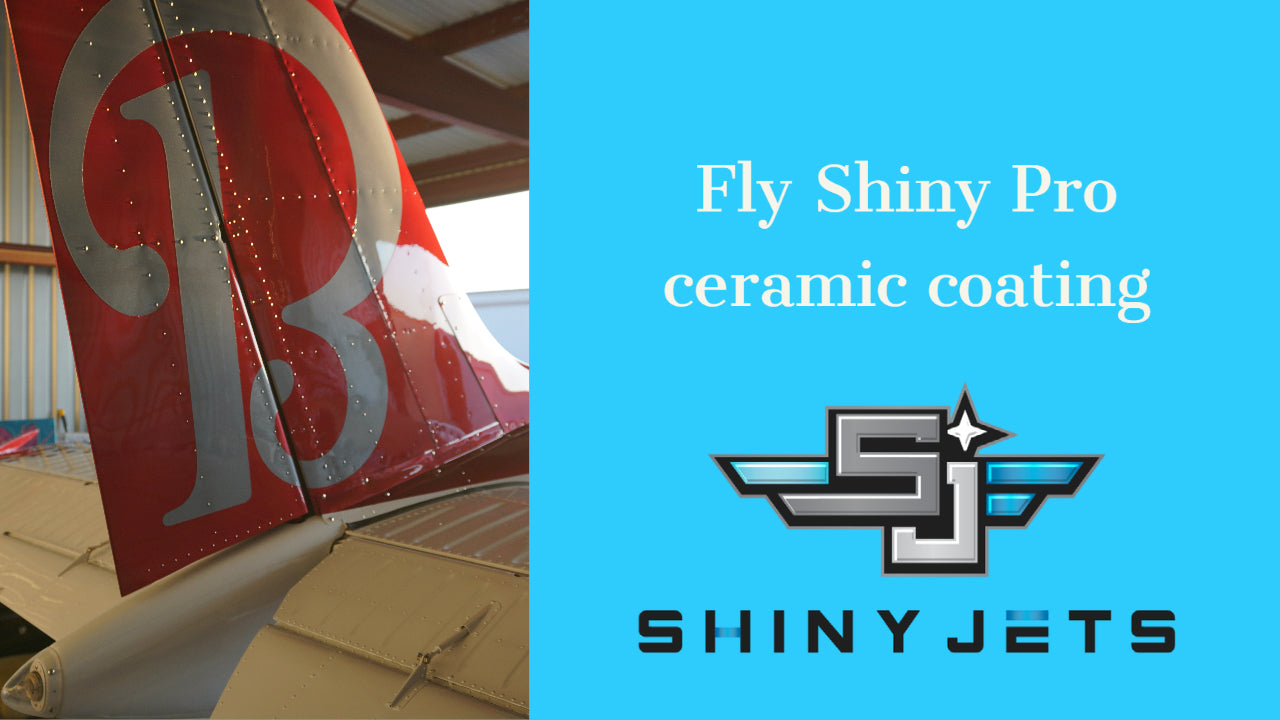Artículo: The Ultimate Guide to Choosing the Best Aircraft Ceramic Coating

The Ultimate Guide to Choosing the Best Aircraft Ceramic Coating

Aircraft ceramic coating is revolutionizing the aerospace industry, offering a nanoceramic particle bonding solution that not only enhances the aircraft's appearance but also significantly increases its longevity by protecting against harmful UV rays, moisture, temperature fluctuations, and more. This advanced ceramic technology creates a hard, slick finish that repels water, oils, dirt, and UV rays, making the aircraft easier to clean and more durable compared to traditional coatings.
Delving into the world of aircraft ceramic coatings, you'll discover key features that set high-quality offerings apart, like Fly Shiny Pro's ability to seal and protect all painted surfaces, ensuring long-lasting shine and protection that won't wash off. This guide will compare ceramic coatings to traditional aircraft finishes, examining their benefits, application processes, and how they maintain gloss and value by preventing oxidation and resisting external elements.
Benefits of Ceramic Coatings for Aircraft
Superior Protection and Durability
Ceramic coatings offer unparalleled protection for aircraft, effectively shielding them from a myriad of environmental threats. These coatings provide a robust barrier against UV rays, moisture, extreme temperatures, and pollutants, which are critical in maintaining the aircraft's structural integrity and aesthetic appearance. Additionally, the coatings enhance resistance to corrosion, chemical attacks, and physical abrasions, significantly extending the service life of the aircraft.
Enhanced Aesthetic Appeal
The application of ceramic coatings not only protects but also enhances the aircraft's appearance. These coatings impart a high gloss and shine, which often makes the aircraft look as if it has just been freshly painted. The hydrophobic properties of the coatings make them repel water, oil, and dirt, ensuring that the aircraft remains cleaner for longer periods and is easier to maintain. This results in reduced maintenance costs and less downtime for cleaning, which is particularly beneficial for commercial operations.
Improved Operational Efficiency
By creating a smoother surface, ceramic coatings improve the aerodynamics of the aircraft, thereby reducing drag and enhancing fuel efficiency. This smoother surface also helps in reducing the build-up of ice on the wings and other critical areas during flights in colder climates, further ensuring safety and efficiency. The overall reduction in required maintenance and the ability to withstand harsh environmental conditions directly translate into cost savings and operational efficiencies.
Longevity and Cost-Effectiveness
Ceramic coatings are known for their long-lasting properties, with some high-quality options providing protection for three to five years after a single application. This durability makes ceramic coatings a cost-effective alternative to regular repainting or frequent maintenance. Moreover, the ease of application withe Fly Shiny Pro Ceramic coating and the long-term benefits in terms of protection and reduced maintenance needs make it a prudent investment for any aircraft owner.
Comprehensive Environmental Resistance
One of the standout features of ceramic coatings is their ability to provide comprehensive protection against a wide range of environmental factors. These include UV damage, oxidation, heat, and chemical attacks, all of which can significantly degrade an aircraft's performance and appearance over time. The chemical bond formed by ceramic coatings with the aircraft's paint is robust, ensuring that the protection is deep-rooted and long-lasting. This resistance is critical in maintaining the aircraft's value and operational readiness, irrespective of the operating environments.
Key Features of High-Quality Aircraft Ceramic Coatings
The Ultimate Guide to Choosing the Best Aircraft Ceramic Coating
Aircraft ceramic coating is revolutionizing the aerospace industry, offering a nanoceramic particle bonding solution that not only enhances the aircraft's appearance but also significantly increases its longevity by protecting against harmful UV rays, moisture, temperature fluctuations, and more. This advanced ceramic technology creates a hard, slick finish that repels water, oils, dirt, and UV rays, making the aircraft easier to clean and more durable compared to traditional coatings.
Delving into the world of aircraft ceramic coatings, you'll discover key features that set high-quality offerings apart, like Fly Shiny Pro's ability to seal and protect all painted surfaces, ensuring long-lasting shine and protection that won't wash off. This guide will compare ceramic coatings to traditional aircraft finishes, examining their benefits, application processes, and how they maintain gloss and value by preventing oxidation and resisting external elements.
Benefits of Ceramic Coatings for Aircraft
Superior Protection and Durability
Ceramic coatings offer unparalleled protection for aircraft, effectively shielding them from a myriad of environmental threats. These coatings provide a robust barrier against UV rays, moisture, extreme temperatures, and pollutants, which are critical in maintaining the aircraft's structural integrity and aesthetic appearance. Additionally, the coatings enhance resistance to corrosion, chemical attacks, and physical abrasions, significantly extending the service life of the aircraft.
Enhanced Aesthetic Appeal
The application of ceramic coatings not only protects but also enhances the aircraft's appearance. These coatings impart a high gloss and shine, which often makes the aircraft look as if it has just been freshly painted. The hydrophobic properties of the coatings make them repel water, oil, and dirt, ensuring that the aircraft remains cleaner for longer periods and is easier to maintain. This results in reduced maintenance costs and less downtime for cleaning, which is particularly beneficial for commercial operations.
Improved Operational Efficiency
By creating a smoother surface, ceramic coatings improve the aerodynamics of the aircraft, thereby reducing drag and enhancing fuel efficiency. This smoother surface also helps in reducing the build-up of ice on the wings and other critical areas during flights in colder climates, further ensuring safety and efficiency. The overall reduction in required maintenance and the ability to withstand harsh environmental conditions directly translate into cost savings and operational efficiencies.
Longevity and Cost-Effectiveness
Ceramic coatings are known for their long-lasting properties, with some high-quality options providing protection for three to five years after a single application. This durability makes ceramic coatings a cost-effective alternative to regular repainting or frequent maintenance. Moreover, the ease of application and the long-term benefits in terms of protection and reduced maintenance needs make it a prudent investment for any aircraft owner.
Comprehensive Environmental Resistance
One of the standout features of ceramic coatings is their ability to provide comprehensive protection against a wide range of environmental factors. These include UV damage, oxidation, heat, and chemical attacks, all of which can significantly degrade an aircraft's performance and appearance over time. The chemical bond formed by ceramic coatings with the aircraft's paint is robust, ensuring that the protection is deep-rooted and long-lasting. This resistance is critical in maintaining the aircraft's value and operational readiness, irrespective of the operating environments.
Key Features of High-Quality Aircraft Ceramic Coatings
Chemical Composition and Bonding
Ceramic coatings are distinguished by their primary component, silicon dioxide (SiO2), which is also found in glass, providing a clear, hard finish. These coatings chemically bond to the aircraft's surface, creating a durable layer that cannot be removed by washing or chemical means but only through abrasion. This bond is enhanced by the high SiO2 content in premium products like Fly Shiny Pro, is designed to have the best bonding properties in the ceramic coating industry.
Hydrophobic Properties
A standout feature of high-quality ceramic coatings is their hydrophobic nature, which repels water and prevents contaminants from adhering to the aircraft's surface. This property simplifies cleaning and maintenance, keeping the aircraft in pristine condition with less effort.
Durability and Environmental Friendliness
The longevity of ceramic coatings is remarkable, with high-quality options offering protection that lasts three to five years. Additionally, products like Fly Shiny Air Guard which is sprayable are environmentally friendly alternatives to traditional coatings, providing a sustainable option without sacrificing performance.
Application Process and Longevity
Initial Preparation and Cleaning
- Surface Preparation: Proper surface preparation is crucial for effective ceramic coating bonding, involving rigorous cleaning, decontamination, and flawless correction.
- Degreasing: Thoroughly wash and degrease the aircraft to remove all oils from any polishing compounds before applying the ceramic coating.
- Polishing: Compounding or polishing the paint ensures a smooth surface, enhancing the coating's adherence and effect.
- Decontamination: Use a panel prep. to wipe and clean off any residual contaminants, providing a pristine surface for coating application.
Application Technique
- Application Environment: Ensure the application is done in a well-lit, warm, dry, and sheltered environment to facilitate proper leveling and curing of the ceramic coating.
- Application Process: Apply the ceramic coating in 2-by-2-foot increments, ensuring even coverage and adequate bonding time before moving to the next section.
- Curing Time: After application, the coating should undergo at least 24 hours of cure time in a cool, dry environment to set properly.
- Fly Shiny Pro: Is applied with a buffer and uses 1/3rd the product compared too all other ceramic coatings while the process jams the pores of the paint with nanoparticles creating a much stronger bond and multiples of chemical resistance compare to any other coating on the market,
Maintenance and Longevity
- Routine Care: Avoid harsh chemicals and sharp implements. Regular cleaning helps maintain the coating’s integrity and longevity.
- Environmental Protection: The coating resists the action of degreasers or fuel. With proper care, it can last many years without needing reapplication.
- Weather Considerations: Protect the coated aircraft from harsh weather conditions and keep it sheltered when not in use to prevent premature wear and damage.
Professional vs. DIY Application
- Professional Application: Offers a more durable result, lasting up to 5 years, thus providing peace of mind and reliability.
- DIY Application: While more cost-effective, it may require annual reapplication and lacks the professional finish and longevity of a specialist's work.
Comparing Ceramic Coatings to Traditional Aircraft Coatings
Cost and Accessibility
Ceramic coatings, while initially more expensive due to the complexity of their application and composition, offer a more durable and longer-lasting protection compared to traditional polymer coatings such as Permaguard paint coatings. Despite the higher upfront cost, ceramic sealants prove to be a cost-effective investment over time, often cheaper and requiring less frequent reapplications than traditional paint protection options.
Challenges in Application
Applying ceramic coatings can be particularly challenging around small and numerous components like rivets, which are common in aircraft structures. However, unlike traditional wax jobs, Fly Shiny Pro does not lead to p-static problems, making them more suitable for comprehensive aircraft coverage.
Performance and Durability
Traditional aircraft coatings, such as polyurethane and epoxy, provide essential protection against environmental factors but generally last shorter periods and require more maintenance. Ceramic coatings, on the other hand, not only offer enhanced durability and resistance against water, oils, and dirt but also bond more strongly to the aircraft's surface especially Fly Shiny Pro with its chemical makeup allowing it to be applied much differently than all ceramic coatings, resulting in extended longevity and reduced maintenance needs.
Environmental Resistance
Ceramic coatings excel in providing comprehensive environmental resistance, protecting against UV damage, oxidation, heat, and chemical attacks more effectively than traditional coatings. This robust protection helps maintain the aircraft’s aesthetic and structural integrity over longer periods, even under harsh conditions.
Maintenance Requirements
While traditional coatings may require frequent touch-ups and can be labor-intensive, ceramic coatings are known for their ease of maintenance. This characteristic allows for longer intervals between necessary maintenance sessions, ultimately saving time and resources for aircraft operators.
Conclusion
Through this comprehensive exploration, we've highlighted the cutting-edge advantages of ceramic coatings for aircraft, revealing their unsurpassed protection, durability, and aesthetic enhancement. The comparison with traditional coatings underlines ceramic's superiority in longevity, resistance to environmental hazards, and maintenance ease, showcasing it as a prudent choice for safeguarding the value and operational efficiency of aircraft. By embracing this technology, aircraft owners and operators are not only investing in the visual appeal and preservation of their aircraft but also in a future of reduced maintenance needs and enhanced performance.
As the aerospace industry continues to evolve, the adoption of ceramic coatings stands as a testament to the commitment towards excellence and sustainability. The benefits, from operational efficiency to environmental friendliness, affirm the significance of ceramic technology in the future of aircraft maintenance and preservation. This guide serves as a navigation beacon, steering readers towards making informed decisions in the selection and application of ceramic coatings, ensuring their aircraft's longevity and pristine condition in the years to come.
FAQs
How to Select the Ideal Ceramic Coating for Your Aircraft
Q: What factors should I consider when choosing a ceramic coating for my aircraft?
A: When selecting a ceramic coating, consider the reputation and expertise of the service provider, the quality and longevity of the product, amount of product needed, customer feedback, cost, whether the installer is certified and trained, the ease of ongoing maintenance, the level of protection provided, available customization options, and additional services offered by the shop.
Top Ceramic Coating Brands for Aircraft
Q: Which brands offer the top ceramic coatings for aircraft?
A: Among the leading ceramic coating brands for aircraft is Fly Shiny Pro because of how much surface area one 50ML bottle of will cover. One 50ML bottle will easily cover all the painted surface on a Cessna Citation CJ3. Because of the application process the coating bonds much stronger than the other coatings on the market. Another option is Fly Shiny Air Guard which is a sprayable ceramic coating that has extreme gloss and great hydrophobic properties.
Cost of Applying Ceramic Coating on an Aircraft
Q: What is the approximate cost to apply a ceramic coating on an airplane?
A: The cost to apply a ceramic coating on an airplane can vary greatly based on factors such as the aircraft's age, size, and condition. As a general example, ceramic coating a single-engine turboprop may start in the low $3,000 range. For more precise pricing purchase the Shiny Jets Pricing App.
Determining the Quality of Ceramic Coatings
Q: How can I assess the quality of a ceramic coating?
A: The quality of a ceramic coating can be gauged by examining the volume and grade of SiO2 (silicon dioxide) it contains. A high-quality ceramic coating will typically have over 70% SiO2 content, but the purity and grade of the SiO2 are even more critical than the volume for determining the coating's overall quality.
Chemical Composition and Bonding
Ceramic coatings are distinguished by their primary component, silicon dioxide (SiO2), which is also found in glass, providing a clear, hard finish. These coatings chemically bond to the aircraft's surface, creating a durable layer that cannot be removed by washing or chemical means but only through abrasion. This bond is enhanced by the high SiO2 content in premium products
Types and Application Kits
There are two primary types of ceramic coatings: polymer coatings, which combine a polymer base with ceramic particles, and glass coatings, based on a silica and ceramic particle mixture. For application, kits such as Fly Shiny Ceramic Coating package provide everything needed, including a coating, applicator tools, ensuring a professional-grade application.
Hydrophobic Properties
A standout feature of high-quality ceramic coatings is their hydrophobic nature, which repels water and prevents contaminants from adhering to the aircraft's surface. This property simplifies cleaning and maintenance, keeping the aircraft in pristine condition with less effort.
Durability and Environmental Friendliness
The longevity of ceramic coatings is remarkable, with high-quality options like Fly Shiny Pro offering protection that lasts three to five years. Additionally, products like Fly Shiny Pro are environmentally friendly alternatives to traditional paints, providing a sustainable option without sacrificing performance.
Application Process and Longevity
Initial Preparation and Cleaning
- Surface Preparation: Proper surface preparation is crucial for effective ceramic coating bonding, involving rigorous cleaning, decontamination, and flaw correction.
- Degreasing: Thoroughly wash and degrease the aircraft to remove all oils from any polishing compounds before applying the ceramic coating.
- Polishing: Compounding or polishing the paint ensures a smooth surface, enhancing the coating's adherence and effect.
- Decontamination: Use a ceramic prep spray to wipe off any residual contaminants, providing a pristine surface for coating application.
Application Technique
- Application Environment: Ensure the application is done in a well-lit, warm, dry, and sheltered environment to facilitate proper leveling and curing of the ceramic coating.
- Application Process: Apply the ceramic coating in large 4x4 to 5x5 foot sections with Shiny Jets application process, ensuring even coverage and adequate bonding time before moving to the next section.
- Curing Time: After application, the coating should undergo at least 24 hours of cure time in a cool, dry environment to set properly.
Maintenance and Longevity
- Routine Care: Avoid harsh chemicals and sharp implements. Regular cleaning helps maintain the coating’s integrity and longevity.
- Environmental Protection: The coating resists the action of degreasers or fuel. With proper care, it can last many years without needing reapplication.
- Weather Considerations: Protect the coated aircraft from harsh weather conditions and keep it sheltered when not in use to prevent premature wear and damage.
Professional vs. DIY Application
- Professional Application: Offers a more durable result, lasting up to 5 years, , thus providing peace of mind and reliability.
- DIY Application: While more cost-effective, it may require annual reapplication and lacks the professional finish and longevity of a specialist's work.
Comparing Ceramic Coatings to Traditional Aircraft Coatings
Cost and Accessibility
Ceramic coatings, while initially more expensive due to the complexity of their application and composition, offer a more durable and longer-lasting protection compared to traditional paint coatings. Despite the higher upfront cost, ceramic sealants prove to be a cost-effective investment over time, often cheaper and requiring less frequent reapplications than traditional paint jobs.
Challenges in Application
Applying ceramic coatings can be particularly challenging around small and numerous components like rivets, which are common in aircraft structures. However, unlike traditional wax jobs, Fly Shiny Pro ceramic coating does not lead to p-static problems, making them more suitable for comprehensive aircraft coverage.
Performance and Durability
Traditional aircraft coatings, such as polyurethane and epoxy, provide essential protection against environmental factors but generally last shorter periods and require more maintenance. Ceramic coatings, on the other hand, not only offer enhanced durability and resistance against water, oils, and dirt but also bond more strongly to the aircraft's surface, resulting in extended longevity and reduced maintenance needs.
Environmental Resistance
Ceramic coatings excel in providing comprehensive environmental resistance, protecting against UV damage, oxidation, heat, and chemical attacks more effectively than traditional coatings. This robust protection helps maintain the aircraft’s aesthetic and structural integrity over longer periods, even under harsh conditions.
Maintenance Requirements
While traditional coatings may require frequent touch-ups and can be labor-intensive, ceramic coatings are known for their ease of maintenance. This characteristic allows for longer intervals between necessary maintenance sessions, ultimately saving time and resources for aircraft operators.
Conclusion
Through this comprehensive exploration, we've highlighted the cutting-edge advantages of ceramic coatings for aircraft, revealing their unsurpassed protection, durability, and aesthetic enhancement. The comparison with traditional coatings underlines ceramic's superiority in longevity, resistance to environmental hazards, and maintenance ease, showcasing it as a prudent choice for safeguarding the value and operational efficiency of aircraft. By embracing this technology, aircraft owners and operators are not only investing in the visual appeal and preservation of their aircraft but also in a future of reduced maintenance needs and enhanced performance.
As the aerospace industry continues to evolve, the adoption of ceramic coatings stands as a testament to the commitment towards excellence and sustainability. The benefits, from operational efficiency to environmental friendliness, affirm the significance of ceramic technology in the future of aircraft maintenance and preservation. This guide serves as a navigation beacon, steering readers towards making informed decisions in the selection and application of ceramic coatings, ensuring their aircraft's longevity and pristine condition in the years to come.



Dejar un comentario
Este sitio está protegido por hCaptcha y se aplican la Política de privacidad de hCaptcha y los Términos del servicio.